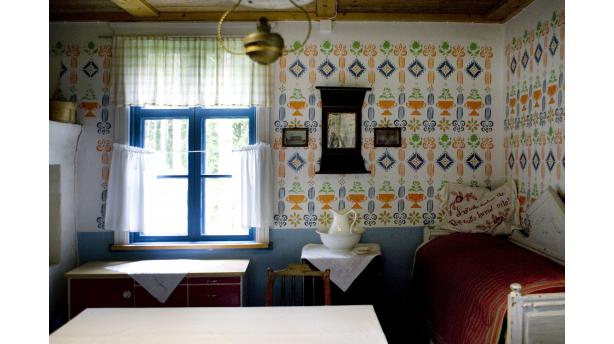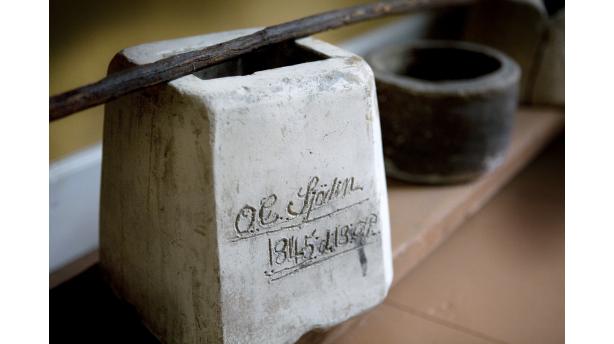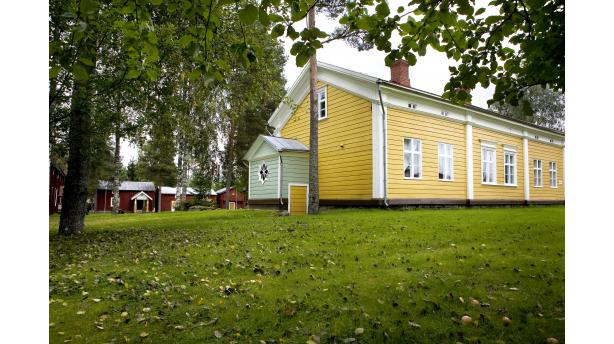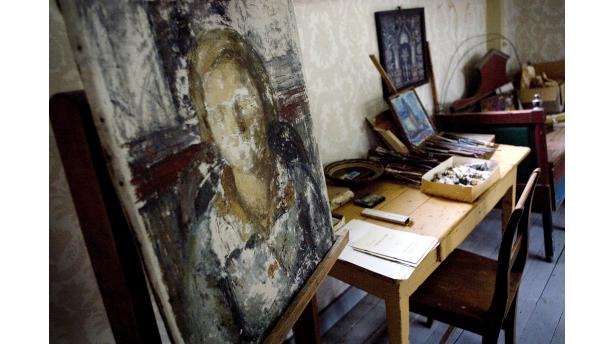Museum A-Ö » Religion and society » Pörtom Museum
Pörtom Museum




Did you know...
One of the rarities in the museum is a penny-farthing passport made for Anders Wägar in 1916, i.e. a certain kind of bicycle driving license.
The Pörtom Museum is mainly composed of three buildings relocated on the area: the Småttgården farmhouse furnished in peasant style, the Alholma mansion, where a collection of glass from the Berga glassworks is on view, and Viktor Dalbo’s atelier with art. In the proximity of the museum one can also explore antiquities. End your visit with a cup of coffee and a bun in the atmospheric café of the museum.
Småttgården originates from the 18th century, but its interior dates back to the 19th century, and there are colourful and unique wallpapers modeled on the original design in the house. On display are domestic items, agriculture tools and archaeological findings. In the attic is a garment chamber, where on show is for instance the national costume of Pörtom. In the vicinity of the museum are some ancient findings, for instance Stone and Bronze Age habitations and graves. At the museum you can buy a replica of the 4 200 years old Pörtom jug, which was discovered in the 1930s in Lokåsen, Pörtom. The jug was probably certain kind of string ceramic.Industrialist Olof Sjöberg junior had Alholma constructed in the 1850s. The locals called the house a “mansion”. In the elegantly furnished mansion is displayed the unique glass collection of the Berga glassworks. The Sjöberg family established and managed the glassworks, which operated in the years 1797-1883. At the end of the 18th century even the peasantry had begun to have glass windows in their houses, and during the 19th century the size of the windows increased. The demand for bottles, decanters and wine glasses also grew. In the same building is a museum as well: in one of the halls is displayed a bank hall, which has been preserved in its entirety.
Viktor Dalbo’s (1883-1957) atelier from the beginning of the 20th century is also on the area. Characteristic for his art is the expressiveness of colour and shape in various landscape-themed paintings. Dalbo was trained as a teacher, but he attended the Helsinki School of Art and Drama and later ran a successful antiquarian. In his senior years he returned to his home region and turned the double cabin of his childhood into an atelier in the 1940s. To the museum area also belongs a school building, which displays school life in the beginning of the 20th century.
A fair takes place on the museum area in the beginning of July. Vaasan veteraaniautoseura (Vaasa Veteran Car Society) and Vaasan moottoripyöräilijät (Vaasa Motorcyclists) usually make an annual summer trip to the museum, when people have the chance to admire their beautiful vehicles. There is also an art exhibition and a sing-along evening in the programme.



